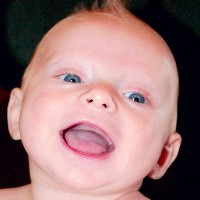 Engineers and clinicians at Brown University and Women & Infants Hospital of Rhode Island in Providence designed a system that can analyze a baby’s cry for signs of developmental problems or disorders. The findings of the Brown team are scheduled for publication in an upcoming issue of the Journal of Speech, Language and Hearing Research.
Engineers and clinicians at Brown University and Women & Infants Hospital of Rhode Island in Providence designed a system that can analyze a baby’s cry for signs of developmental problems or disorders. The findings of the Brown team are scheduled for publication in an upcoming issue of the Journal of Speech, Language and Hearing Research.
The system evaluates acoustical features of babies’ cries to indicate signs of problems in very young infants, even newborns, who may suffer from problems such as birth trauma or brain injuries. “Cry analysis,” says co-author and psychiatrist Stephen Sheinkopf, “can be a noninvasive way to get a measurement of these disruptions in the neurobiological and neurobehavioral systems in very young babies.”
The system first breaks down recorded cries into frames of 12.5 milliseconds, with each frame analyzed for frequency characteristics, voicing, and acoustic volume. The system then evaluates the data and highlights the properties considered most useful.
With these data, the system reassembles the audio frames and characterizes the frames as either an utterance — a vocalized cry — or silence. The utterances are timed, with longer cries separated from shorter cries, and the time between utterances measured. The pitch and contour of the pitch are then averaged across each utterance.
The analysis yields data on 80 properties, which could hold clues to the health of the baby. Neurological deficits, for example, could change the way babies control their vocal cords, with tiny differences creating variations in pitch and other acoustic properties.
Earlier systems recorded baby cries and converted them to spectrograms, a visual representation of sound frequencies, which were then coded by hand. Some of that process has been automated, say the authors, but it remains time-consuming and cumbersome.
In the paper, the researchers led by Brown’s Barry Lester, director of the university’s Center for the Study of Children at Risk, tested the accuracy and reliability of the automated system against voicing and pitch characteristics coded by hand. The results showed the automated system detected a key measure (fundamental frequency) with 88 to 95 percent accuracy , and likewise detected accurately voicing characteristics in the crying samples.
Lester calls a baby’s cry “a window into the brain” of a baby. Sheinkopf plans to use the system to identify cry properties that might correlate with autism.
Read more:
- Genetic Tech Company to Acquire Prenatal Test Developer
- FDA Extends Flu Therapy Approval for Infants
- Faster Whole Genome Sequencing Developed for Infants
- Premature Infant Respiratory Support Guidelines Tested
Photo: D. Sharon Pruitt/Flickr
* * *

 RSS - Posts
RSS - Posts
You must be logged in to post a comment.